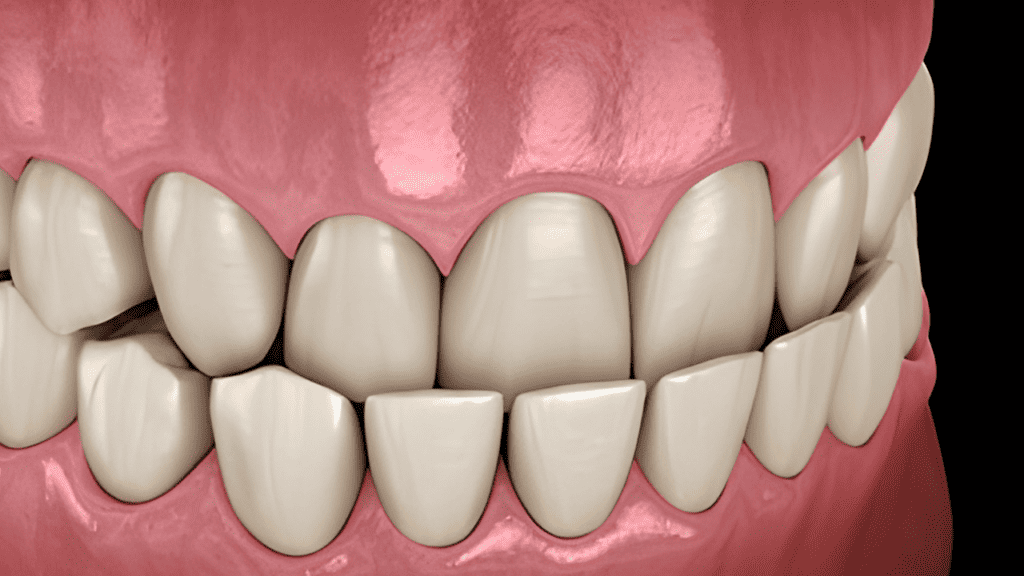Lingual braces are gaining popularity as a discreet alternative to traditional braces for achieving a straight and confident smile. If you’re considering orthodontic treatment but desire a less noticeable option, lingual braces might be the perfect choice for you.
In this article, we will explore the ins and outs of lingual braces, their effectiveness, cost, potential side effects, and the benefits they offer compared to other orthodontic options.
What Are Lingual Braces?
Lingual braces, also known as incognito braces, are an orthodontic treatment that involves attaching brackets and wires to the back surface of your teeth.
Unlike traditional braces, which are affixed to the front of the teeth, lingual braces are practically invisible from the outside, making them an appealing choice for individuals who wish to straighten their teeth without drawing attention to their orthodontic treatment.
Are Lingual Braces Right for You?
Lingual braces can be a suitable option for a wide range of orthodontic cases. Whether you have overcrowded teeth, gaps, misalignments, or bite issues, lingual braces can effectively address these concerns.
It’s important to consult with an orthodontist to determine if lingual braces are the right choice for your specific needs. They will evaluate your oral condition, discuss your treatment goals, and recommend the most suitable orthodontic option for you.
Do Lingual Braces Take Longer?
The treatment duration with lingual braces is comparable to traditional braces. While it may vary depending on the complexity of your case, on average, the treatment time ranges from 18 to 36 months.
It’s worth noting that the duration of any orthodontic treatment depends on factors such as the severity of the misalignment, your oral health, and how well you follow your orthodontist’s instructions. Regular check-ups and adjustments are necessary to ensure the progress of your treatment.
Do Lingual Braces Work?
Yes, lingual braces are highly effective in straightening teeth and correcting bite issues. By exerting gentle and controlled pressure, the braces gradually move the teeth into their desired positions. The wires and brackets used in lingual braces are custom-made to fit your teeth precisely, ensuring optimal comfort and effective treatment.
With consistent wear and regular adjustments, you can achieve the desired results and improve both the aesthetics and functionality of your smile.
Do Lingual Braces Work as Well as Regular Braces?
Lingual braces work just as effectively as traditional braces in achieving orthodontic results. The only difference lies in the placement of the braces. While traditional braces are attached to the front surface of the teeth, lingual braces are discreetly positioned on the back surface.
The mechanics and principles of both types of braces are similar, allowing for effective tooth movement and alignment. Therefore, you can expect lingual braces to provide the same level of treatment effectiveness as traditional braces.
Cost of Lingual Braces Compared to Other Braces
When it comes to cost, lingual braces are generally more expensive than traditional braces. The complexity of their design, customization, and additional chair time required for their placement contribute to the higher cost.
The price range for lingual braces can vary from $3000 dollars up to over $14,000 dollars depending on factors such as the geographical location, the orthodontist’s expertise, and the specific needs of your case.
It’s essential to discuss the cost details with your orthodontist to understand the financial aspects associated with lingual braces.
Are Lingual Braces More Uncomfortable Than Other Braces?
Lingual braces may initially feel slightly uncomfortable or awkward due to their placement on the back of the teeth. People often report temporary speech problems and difficulty eating, however, as with any orthodontic treatment, your mouth will gradually adjust to the presence of the braces, and any discomfort will diminish over time.
The brackets and wires of lingual braces are designed to be smooth and less intrusive, reducing the likelihood of irritation to the tongue and inner cheeks. While there may be a short adjustment period, most people find lingual braces to be comfortable and manageable throughout their treatment journey.
What Are the Benefits of Lingual Braces?
There are a few key benefits of lingual braces over traditional braces that may make you consider getting them. Here are the top five key benefits.
- Discreet Appearance: The main advantage of lingual braces is their nearly invisible nature. Since the brackets and wires are placed on the back of the teeth, they remain hidden from view when you smile or speak. This makes lingual braces an excellent choice for individuals who wish to undergo orthodontic treatment without drawing attention to their braces.
- Effective Results: Lingual braces provide the same level of effectiveness as traditional braces. They can correct various orthodontic issues, including crowded or crooked teeth, gaps, and bite misalignments. With proper care and adherence to your orthodontist’s instructions, you can achieve the desired results and enjoy a straight, beautiful smile.
- Customized Fit: Lingual braces are custom-made to fit the unique contours of your teeth. This ensures a comfortable fit and precise tooth movement throughout your treatment. The customization process involves taking detailed impressions of your teeth, which are used to create brackets and wires tailored specifically to your oral structure.
- Minimal Interference: Unlike removable aligners such as Invisalign, lingual braces are fixed in place throughout the treatment duration. This means there’s no need to worry about misplacing or forgetting to wear your aligners. Lingual braces work continuously to straighten your teeth, requiring minimal effort on your part.
What Are the Potential Side Effects of Lingual Braces?
While lingual braces offer numerous benefits, it’s important to be aware of potential side effects that may occur. However, there is no perfect solution, and there will always be side effects with any braces that you get. Here are a few side effects to consider before getting lingual braces.
- Speech Impediment: Initially, you may experience a slight speech impediment as your tongue adjusts to the presence of the lingual braces. However, this typically improves within a short period as your tongue adapts and you become accustomed to speaking with the braces.
- Discomfort and Irritation: Lingual braces may cause mild discomfort and irritation to the tongue and inner cheeks. This is more common during the initial stages of treatment or after adjustments. Wax can be applied to the brackets to alleviate any discomfort and create a barrier between the braces and the soft tissues of your mouth.
- Longer Treatment Time: In some cases, the treatment time with lingual braces may be slightly longer compared to traditional braces. This is because the lingual brackets are smaller and have less leverage than their front-facing counterparts. However, advancements in orthodontic technology have minimized this difference, and the impact on treatment duration is typically minimal.
Conclusion
Lingual braces offer a discreet and effective solution for orthodontic treatment, allowing you to achieve a straight and confident smile without the visibility of traditional braces. While they may require a period of adjustment and diligent oral hygiene, the benefits they offer, such as their nearly invisible appearance, customized fit, and comparable treatment effectiveness, make them a compelling choice for individuals seeking orthodontic correction.
If you’re interested in lingual braces, consult with an experienced orthodontist who can assess your suitability for this treatment option and guide you toward achieving your desired smile transformation. Embrace the journey, and soon you’ll be flashing a beautiful smile with newfound confidence.
Healthline
Lingual Braces: The Upside and Downside of Braces on the Back Side
WebMD
What to Know About Lingual Braces
Orthodontic Gallery
10 Pros and cons of lingual braces
Colgate
Related Articles
Power Chains Braces: The Complete Guide
Headgear Braces: Everything You Need To Know
Erica Anand is a certified dental expert. She holds a BA in Chemistry and a Doctorate of Dental Surgery from Stony Brook University. After completing a two-year pediatric dentistry program, she now runs a private practice focusing on preventive dentistry and is a member of the American Association of Dental Consultants.
Marcus Ramsey has been a professional writer for over seven years. He has talked about and produced content for industries like Dentistry, Healthcare, and more.






